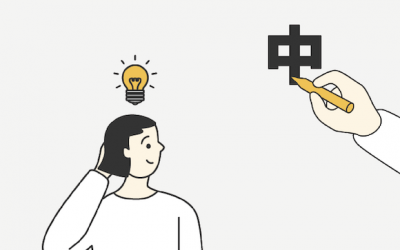The Important Components of Chinese Phonetics
Many Chinese learners find it hard to master the pronunciation. The Chinese phonetic system (also known as pinyin) is very different from that of any of the European languages. In order to have a thorough understanding of pinyin, it would be a good idea to take a close look at its three important components: initial, final and tone.
1. Initials

In the Chinese language, “initials” can be treated as consonants, and they are placed at the beginning of a character’s pinyin. Here are the 23 initials in the Chinese language:
b p m f d t n l g k h j q x z c s zh ch sh r y w
2. Finals

“Finals” can be considered to be either separate vowels or combinations of two different vowels. In addition, there are some finals containing both vowels and consonants. A final usually comes after an initial. You may take a look at the following list of all the finals in the Chinese language:
a o e ai ei ao ou an ang en eng ong i ia ie iao iou ian iang in ing iong u ua uo uai uei uan uang uen ueng ü üe üan ün
3. Tones

Here are four tones in the Chinese language. Tones play a tremendous role in Chinese as the same syllable could have a different meaning if it is read with a different tone. Let’s take a look how each tone is presented:
First tone:
The first tone is high and flat and is marked as a short straight line (mā)
Second tone:
The second tone is also known as the “rising tone”, which rises from the middle to the top (má)
Third tone:
The third tone falls from low to lower and then rises (mǎ)
Forth tone:
The forth tone falls from the top to the bottom (mà)
As has been mentioned above, the same syllable with different tones represents different meanings. Here is an example for you to better understand the importance of tones:
千
qiān
thousands
钱
qián
money
浅
qiǎn
shallow
欠
qiàn
to owe
4. Initial + Final

The pronunciation of a Chinese character usually consists of an initial and a final. There are some rules related to the “compatibility” of different initials and finals, and some finals can exist on their own.
We hope this post will be useful. To learn more about Chinese language, check out one of our blog posts Learn Mandarin Chinese Polyphones






 Whether you want to get a dog, a cat, or a parrot, you should consider the animal's safety and comfort first. We've prepared 13 useful Chinese words to help you take care of your pet and...
Whether you want to get a dog, a cat, or a parrot, you should consider the animal's safety and comfort first. We've prepared 13 useful Chinese words to help you take care of your pet and...



0 Comments